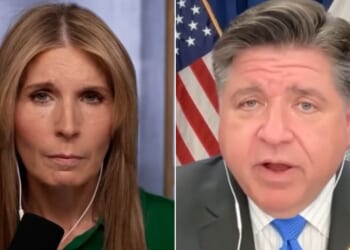Are central banks, tasked primarily with securing price stability, being asked to do too much or too little? Have their tools, such as Quantitative Easing (QE), been overindulged in since 2008? Or has their immense power to steer the macroeconomy been put to good use in the face of crises like climate change, severe inequality, and sluggish productivity?
US Treasury Secretary Scott Bessent has made his view on the matter clear: central banks are asked to do too much. But others have argued the opposite. Earlier this month, economic historian Adam Tooze wrote in the Financial Times that the monetary policymaking arrangement in the UK isn’t working well, and should be revisited. In essence, the Bank of England is not helping, and perhaps even hindering, the government’s efforts to grow the economy. Suffering from a severe period of economic malaise, the UK needs all the help it can get, from every part of the state, independent or not.
Without delving too deeply into the quagmire of central bank independence, Tooze called for a “new concordat” between the Bank and the Government. Others on the progressive end of politics have, along similar lines, advocated for more fiscal and monetary coordination. Personally, I don’t like the term “coordination”, because it hides the real question: who should be in charge, the Bank or the Government? The answer to that question, in the context of a modern democracy, would seemingly have to be the Government.
So, whether you think that we should junk central bank independence altogether (a point I’ll return to) or merely that the nature of the relationship between the Bank and Parliament, which was set down in 1997, needs revisiting, it’s worth considering what such a new concordat might address. In other words, what should the Government consider changing about how the Bank of England operates?
The concordat should address four things. First, the Bank’s mandate which is currently to secure price stability and then to support government policy. On this basis, one could argue that the central bank is already failing. Currently, it is engaged in a process known as Quantitative Tightening (QT), which is effectively the unwinding of the better-known Quantitative Easing, which was first used after the financial crisis. During QE, the Bank purchased bonds in order to inject money into the economy. QT involves selling off those bonds, or simply letting them mature without reinvesting. In so doing, the Bank of England is shrinking its balance sheet and affecting the gilt market. QT is not necessary for price stability, and — far from supporting government policy — it is, by some accounts, making things fiscally tighter for the government. This might lead one to ask: is the Bank’s decision to engage in QT, particularly right now, in line with its mandate?
“Is the Bank’s decision to engage in quantitative tightening, particularly right now, in line with its mandate?”
That is not even to mention all the things that the Bank is choosing not to do, which could support the Government’s aims and are unlikely to prejudice price stability. Consider, for instance, changes in bank regulation to encourage investment —particularly domestic growth driving investment, even green investment, or investment in particular regions of the country. Other central banks have deployed programmes designed to support credit creation in particular regions and sectors — India, Japan, and the Eurozone, for instance. The Bank itself, prior to the recent bout of inflation, had committed to tilting its own bond purchases, meaning skewing them toward “green” rather than “dirty” bonds. It later abandoned this programme.
A concordat could change the way we understand price stability. Instead of instructing the Bank to aim for 2% inflation precisely, a target that is widely accepted as itself arbitrary, the Government could instruct the Bank to seek price stability understood as the absence of highly volatile price levels or hyperinflation. We might imagine this as keeping inflation roughly below 10%, as much empirical evidence suggests inflation doesn’t do lasting harm to the real economy until it gets into double digits.
Some would undoubtedly object: we’ve just had a bout of inflation below this level and it was very painful. This is, of course, true, but even with a precise target, the central bank was unable to prevent the pain and its solution was far from painless, as many at the time pointed out. In fact, it was government action, not central bank policy, that was required to ease the inflationary hurt, something we’d be more likely to get if there was no pretence that solving the issue was the central bank’s sole responsibility in the first place.
The second area I’d suggest considering in a potential new concordat would be the Treasury indemnity of central bank losses. The UK is unusual among central banks for two reasons: first, the Bank of England considers itself capable of making a loss, and second, the Treasury has committed to an indemnity covering any central bank losses. That is: the Treasury, if need be, will bail out the Bank.
Not all central banks consider themselves capable of making a loss. The most obvious counter-example is the US Federal Reserve System, which does not register central bank losses in its official records. Instead, it has adopted a practice of deferred asset accounting. This means that anything which might be otherwise logged as a loss for the Fed is balanced off against the assumption of future gains — this assumption is not unrealistic, given the history of regular gains in the past that are remitted to the Treasury. In short, it is a choice for the Bank of England to account for “losses” in the way it does, and it is a choice for the Treasury to indemnify them. The alternative would be for the central bank to simply cover the losses itself, as in the US, based on future gains, or by virtue of its power to print money.
MPs involved in this new concordat should consider changing the Bank’s accounting practices and/or eliminating the indemnity. Or at the very least, they could force the publication of the legal terms of the indemnity. At the moment the conditions for the Treasury covering central bank losses are unknown to those outside the Treasury. Many have called for the release of the details; among them is the House of Lords committee on Economic Affairs, twice. Without knowledge of how the current indemnity works, it’s hard to understand why it should exist at all.
The third area ripe for reconsideration is the way the Bank of England conducts monetary policy. Since 2009, the Bank has conducted interest rate policy by paying bank rate — that is, the interest rate paid by banks rather than consumers — on the reserves that private banks hold at the central bank. In 2024 it paid out approximately £40 billion to private banks, and such payments are projected to continue through 2033. As well as being large, these payments tend to be politically counter-cyclical. The central bank pays more to private banks when it is trying to raise the interest rate. This is usually a moment of economic pain for the average citizen. It’s hard to understand why the state should be giving huge sums of money, in such a tough moment, to private banks, and not using it to support public institutions. Some will claim that the answer is that we need to induce banks to hold reserves, and that paying them to keep their reserves at the central bank is the best way to do it. I’m not so sure. We don’t pay car companies to install seat belts, we just require it.
By paying interest on reserves to private banks since 2009, the Bank has effectively separated balance-sheet policy from interest rate policy, enabling the central bank to hold a large balance sheet without distorting interest rates. In practice, this has given the Bank a new and incredibly powerful policy tool — the balance sheet. But it’s not obvious what the Bank should be using this tool to achieve, given it is not technically necessary to secure price stability. One might suppose, based on the mandate, that it should be used to support government policy, but the Bank has not adopted such a view.
One way in which a new concordat could alter the contemporary payment on reserves mechanism would be for the Bank could adopt a tiered system of reserves — as many of various political stripes have suggested and other central banks (like the European Central Bank) have implemented. This involves paying banks different rates depending on the amount of reserves they hold at the central bank. It could mean paying banks only for a certain level of reserves — and not for excess or even placing a negative rate on excess. Or it could mean not paying banks at all for the required level of reserves and perhaps implementing a negative rate for those above that level. Notably, for this to work, the bank would likely need to embrace, or re-embrace, reserve requirements — reserve requirements are rules that set out the minimum amount of liquid assets that a commercial bank must hold.
Questioned by Richard Tice about whether the Bank should introduce reserve requirements, Andrew Bailey dismissed the idea. There is, in fact, no reason to dismiss the possibility of reserve requirements: they have been deployed historically by nearly every monetary jurisdiction and are still used (and encouraged) in many jurisdictions today.
Finally, the last specific area ripe for reconsideration as part of a new concordat is balance sheet policy itself. QE, as we all know by now, had a major impact on the economy, but also on our political and social life. This is not particularly surprising as it involved the government creating buckets of money and using it to buy particular assets and not others. What the Bank buys, and how much, matters. There is good reason to consider a means of political input into any such deployment of the balance sheet. In 2024, the House of Lords Committee on Economic Affairs issued a report which called for a memo of understanding between the Treasury and the Bank on such policy, suggesting that two were not in full accord on the matter. Each institution responded to the report effectively saying there was no need for such a memo because I know what I’m doing. Clearly that’s not sufficient, given the mess we’re in right now where the Treasury is desperate to initiate economic growth and the Bank is chuntering on with QT as if it can’t hear the Chancellor at all.
We should reflect for a moment on what all this adds up to. This is a list of pretty major aspects of the contemporary monetary policymaking system. All of them are in need of a re-think if we are to assemble a unified macroeconomic policy in the UK that is fit for the moment. But that might make you wonder: is this a one-off? Should we be engaging in an ad-hoc reconsideration of the system, and then go back to our respective corners (the Government and the central bank)? Or is it more sensible to consider a mechanism through which the Government and the central bank can more regularly “coordinate” policy?
The UK, unlike many other jurisdictions, already has a means for establishing more institutionalised, regular exchange between the Government and the central bank. Every year the Chancellor writes a letter to the Bank offering guidance. In recent decades, as a result of deference to central bank independence, this letter has largely been pro forma and not imbued with much coercive power. But that need not be the case. We could reinvigorate this mechanism, should the Chancellor decide to use this letter to inform the Bank of changes the Government wishes to see both in the structure and operation of the central bank, starting with the four I’ve discussed here.
Unfortunately, it seems unlikely that Rachel Reeves will announce anything like a new concordat at the budget in November, or anytime really. Labour seems committed to hewing as closely as possible to what they understand to be conventional economic and financial wisdom on the subject. I don’t understand why exactly, but right now, the party in government seems unable or unwilling to try anything the contemporary central bank hasn’t already embraced. Consequently, it’s easy to see who is in charge here. One agent hoards the conventional wisdom and the other bows to it. It’s a shame twice over. Doing things as they have been done since the late Nineties is not a recipe for economic success in the 2020s and a system of government in which the central bank is calling the shots is not a democracy.

















